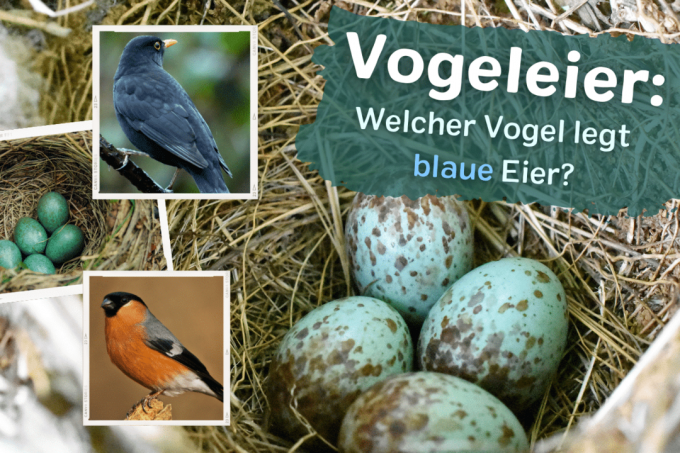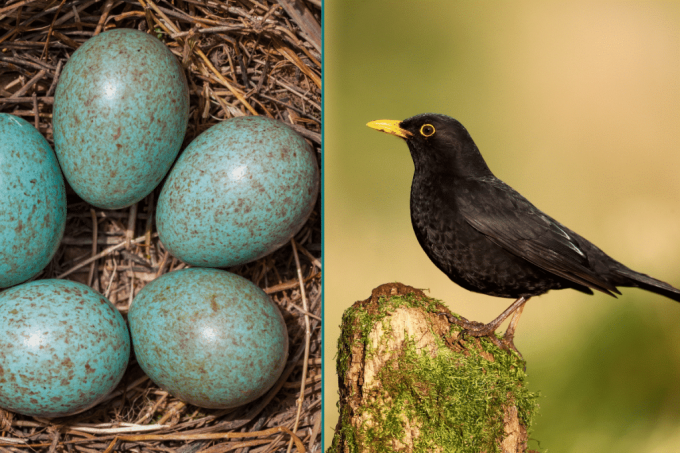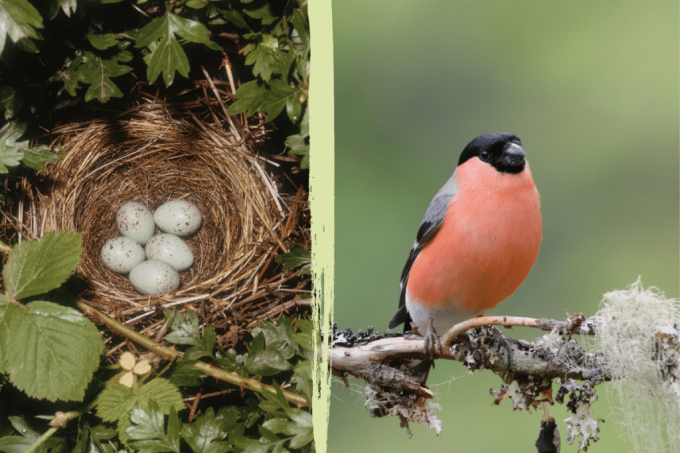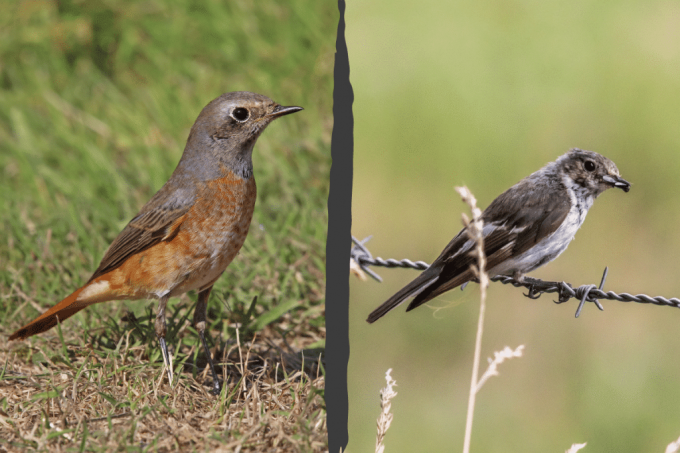
table of contents
- Blue Eggs - Who Was It?
- Blackbird eggs (Turdus merula)
- Bullfinch bird eggs (Pyrrhula pyrrhula)
- Redstart eggs (Phoenicurus phoenicurus)
- Pied flycatcher's eggs (Ficedula hypoleuca)
Again and again you can find bird eggs in the garden or in the wild. Especially conspicuous eggs arouse interest in wanting to know the corresponding bird species - but which bird actually lays blue eggs?
In a nutshell
- Bird eggs of several species can turn blue
- Identification of the species: in addition to color, there are numerous other framework conditions relating to the scrim
- depending on the environmental conditions: colors vary significantly depending on the bird species
Blue Eggs - Who Was It?
Blue-colored bird eggs are distinctive so that we humans can recognize them from afar. One would think that such a concise coloring is particularly easy to assign. However, this task is made more difficult by the fact that there are different characteristics even with this unusual color scheme. This can be assigned to different birds:
Eggs the blackbird (Turdus merula)
The blackbird, also known as the blackbird, is widespread among producers of blue bird eggs. It is not unlikely that blue eggs often belong to this species of bird.

- Egg shape: oval to short oval
- Color: green-blue with turquoise, surface glossy and partly dark spots or spots
- Clutch: mostly 4 - 5, more rarely 3 - 6 eggs
- Locations: preferably in dense hedges, bushes and trees
- seldom close to the ground in populated areas
- Breeding season: March - July
Bird eggs des Bullfinches (Pyrrhula pyrrhula)
The bullfinch or bullfinch is one of the finches and has quite a variety of egg colors, often pale, almost white, but ranging up to strong blue colorations.

- Egg shape: oval
- Color: basic color light blue to blue-green, less often cloudy bluish, towards the blunt end: deep brown / black spots
- Clutch: usually 4 - 6 eggs
- Locations: coniferous forests, light mixed forests, forest edge trees
- Breeding season: May - July
Eggs des Common redstart (Phoenicurus Phoenicurus)
The name of the common redstart suggests otherwise, but it still lays blue eggs.
- Egg shape: oval
- Color: homogeneous greenish-blue to turquoise
- mostly matt to slightly shiny, but rarely also reddish-brown spots on the blunt pole
- Clutch: usually 6 - 7, rarely 3 - 9 eggs
- Locations: tree hollows / forks of light mixed and deciduous forests, forest edges, clearings
- Breeding season: late April - July

Bird eggs des Pied flycatcher (Ficedula hypoleuca)
The pied flycatcher gives birth to its offspring in our native mixed forests, although as a migratory bird it only occasionally stops by us. Because of the nest locations in tree hollows, blue eggs of this bird species are very rarely found, as it is a cave breeder.
- Egg shape: oval to short oval
- Color: homogeneous light blue to blue-greenish, rarely very light to almost white
- Clutch: usually 5 - 8 eggs
- Locations: tree hollows, nest boxes
- Breeding season: May - June
The coloring of bird eggs is primarily due to two different pigments. One colors blue while the other colors red to brown. Depending on the presence and intensity of the individual pigments, a blue, green-blue or completely different color can occur. The color of a bird, his, Head, Plumage or Schnabel has nothing to do with the color of its eggs.
The coloring of the eggs has two main functions. On the one hand there should be camouflage, on the other hand the adult birds should be able to find their clutch again. In the case of blue coloring, finding the eggs is likely to play an important role.
As a parasite, the cuckoo is able to adapt its egg color to the color of the host clutch. Each female cuckoo develops an individual egg color, including blue, depending on the nest it is raised, which it will retain for its entire life.



